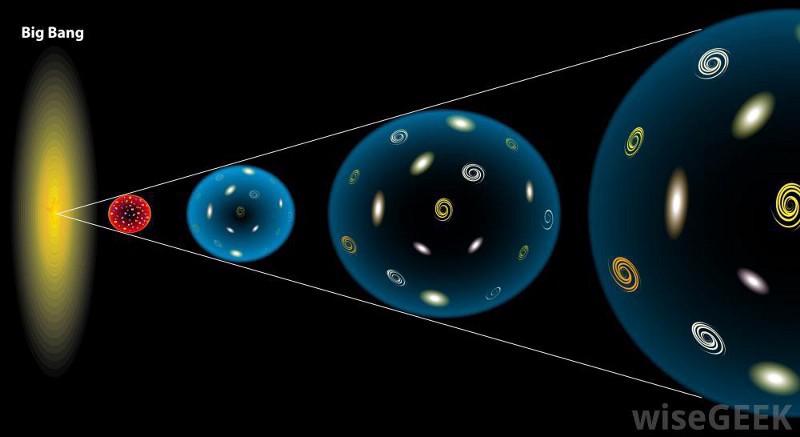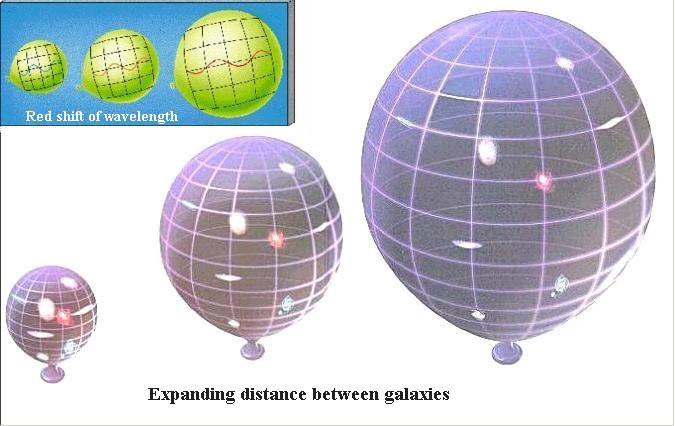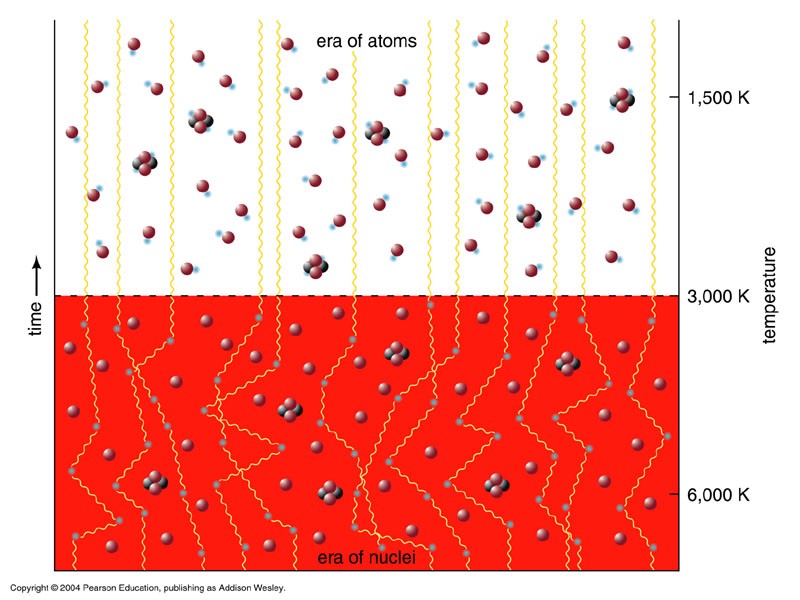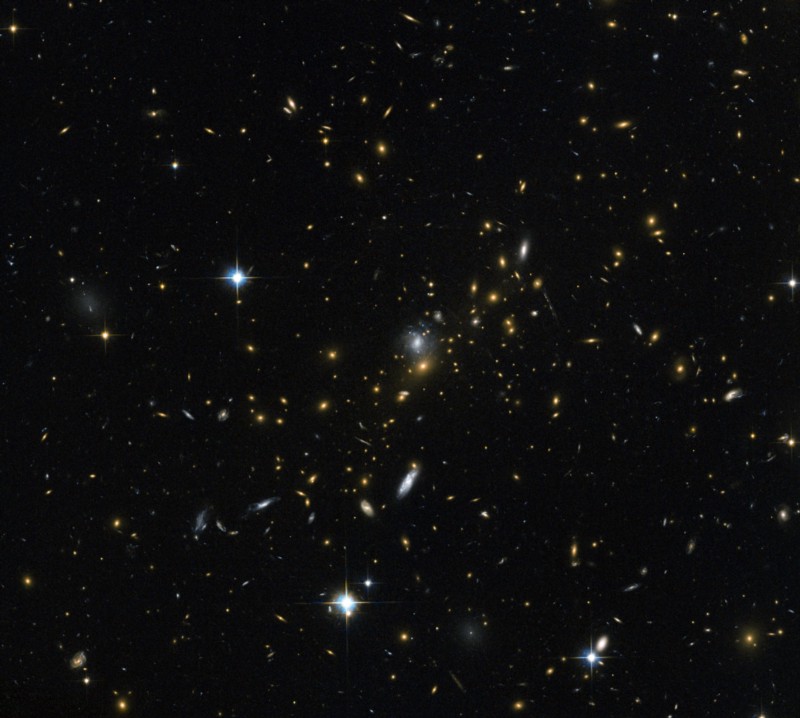Ask Ethan No. 64: What happens to matter with the expansion of the universe?
- Transfer
As the universe expands, radiation stretches and wavelengths increase - but what happens to matter?
Slowly growing tree brings the best fruit
- Moliere
Today is the end of the week, and therefore, after reviewing your questions, we have chosen one that will receive an answer in our column. Asks Andrei Novak:
The Big Bang theory claims that as space-time expands, light shifts to the region of increasing wavelengths. But does this expansion affect particles of matter? After all, their size is finite.
An amazing question, if you think about it.

On the one hand, the amazing story that began in our universe about 13.8 billion years ago continues to evolve. All matter in the Universe, in all its forms, was in a hot and dense state, and expanded. It did not expand as it does with fragments of the explosion, but as a dough suitable in an oven.
If you imagine all the particles of matter as atoms of bread, you will begin to understand how the expansion of the universe works.

From the point of view of each atom, all other atoms run away from it, and those that were initially farther away run away faster than those that were closer. This happens not because atoms move, or distant atoms move faster than neighboring ones - but because the space itself, where they live, expands.
And if space expands, then the Universe does an amazing thing over everything that is in it.

She cools everything! It is easy to see why this works for radiation. He has a certain wavelength, and this length determines his energy.
What happens when distances increase in the universe? The waves stretch and the energies fall. This is what allowed atoms to form in a sea of ionized plasma: spontaneously formed electrons and nuclei were broken by photons, but as the Universe cooled, the photon energy decreased, and it ceased to be enough.

As a result, neutral atoms appeared in us, and 10-100 million years after that they collapsed into stars and galaxies. As the universe expands, the radiation cools as the waves stretch. We have already explained this effect in detail .
What about matter? After all, matter at first moved very fast, and something had to cool it too - or it could not collapse into stars and galaxies. Remember - for the molecular cloud to crumble and form stars, the gas must be cold. Otherwise, nothing will work.

In general, for a galaxy to form and matter to remain gravitationally bound in the form of a spiral or elliptical structure, the particle velocity must be lower than the runaway velocity for this galaxy. For most galaxies, this speed is only a few hundred kilometers per second. And although it's pretty fast, remember that initially most of the atoms moved at speeds of hundreds of thousands of kilometers per second!
And yet today in the Universe there are enough stars and galaxies.

So what happened to matter? Think not only about how waves behave in an expanding Universe, but also about what this means for particles moving at certain speeds. Speed is the distance that a particle travels in a given time, just like the wavelength is the distance between two adjacent wave crests. Particle velocity plays the same role as the wavelength of radiation: it is a measure of the kinetic energy inherent in a system.
Radiation of higher energies (with shorter wavelengths) behaves more like gamma rays, and less like radio waves, and particles with higher velocities also have more energy. That is why hotter particles - with a higher temperature - and speeds are higher, therefore, under the right conditions, they can do more physical work.

With the expansion of the Universe and an increase in the distances between objects, not only the wavelengths increase, and not only the radiation energy decreases. Speeds also fall - which means that the particle energy also drops! Think for yourself: let's say you are moving at a speed of 100 km / s relative to a certain point, and the Universe is expanding at a speed of 10 km / s per kiloparsec (the speed of expansion is calculated in speed per unit distance). This is 1000 times faster than today's expansion, but it is a good example of speeds that were in the past. A kiloparsec is a distance of just over 3,000 light years.
What happens if you travel ten million years - the time it takes for a body moving at a speed of 100 km / s to overcome one kiloparsec?

You are still moving at a speed of 100 km / s relative to your original position, but it is already a kiloparsec away from you. It moves away from you at a speed of 100 km / s, but part of this speed - 10 km / s - refers to the expansion of the Universe. Therefore, your speed relative to the expanding Universe has slowed down, and now you are moving only at a speed of 90 km / s. And as the universe expands, your speed continues to fall.
Therefore, in an expanding Universe, radiation loses energy due to redshift, but matter also loses kinetic energy due to the expansion of the Universe!

What is even more interesting is the ability to interpret everything that moves at near-light speed as radiation. And everything that moves much more slowly is like matter. Therefore, initially even particles and protons behaved like radiation, and later (now, for example) even neutrinos begin to behave like matter. There are models that assign small, but nonzero, rest masses to particles like a photon and graviton. If the Universe continues to expand and cool, and these particles really find their mass, they will begin to behave like matter, and cool, and - if the dark energy does not scatter all the matter from each other - they will also begin to pile together!

Therefore, Andrei, the expansion of the Universe also affects the particles of matter: they cool and lose energy. For particles that do not move with relativistic velocities, the energy is proportional to the square of the velocity, therefore, when due to the expansion of the Universe the particle energy decreases by half, its velocity decreases by 29% (by 1 / √2). Protons and neutrons cease to be relativistic, and begin to behave like matter when the universe executes a microsecond; electrons - at the age of a second; neutrinos - tens of thousands of years; photons and gravitons, if they really have mass, will behave no earlier than a quintillion years will be in the Universe!

For the formation of molecules, stars, galaxies and planets that we are observing today, it was required not only that the radiation lost energy, but also that the kinetic energy of individual particles fell. We are very lucky that the expansion of the Universe works just like that - because it turned out to be the Universe that we are now observing!
Thank you for the wonderful question, and I hope that the explanation has been made clear to you and the rest. Send me your questions and suggestions for the following articles.
